50+ Live Chat Statistics: 2023 Latest Trends and Insights
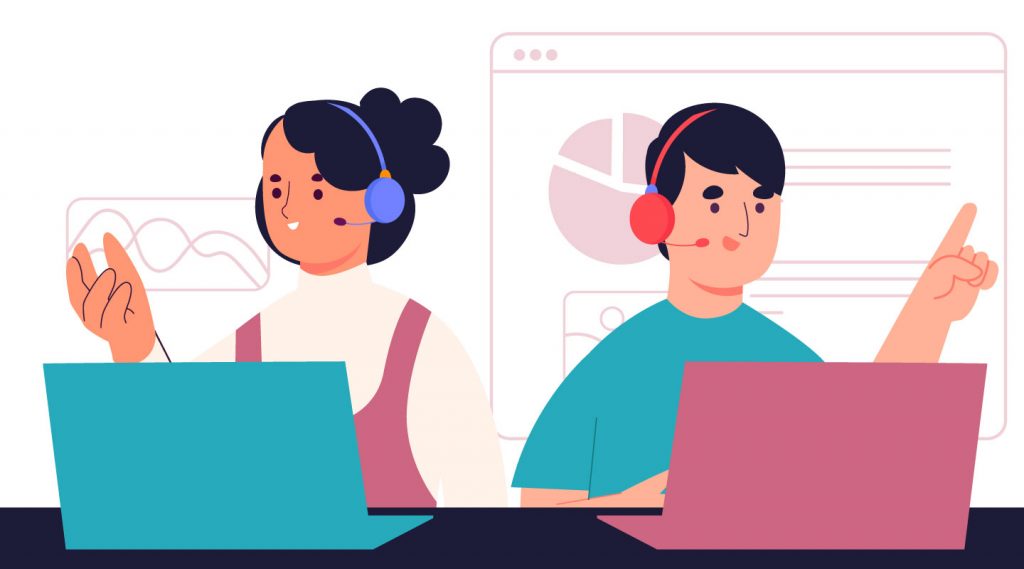
As businesses are starting to recognize the value of providing excellent customer service, live chat has become an increasingly popular channel for customers to get in touch with companies. More and more businesses are now incorporating it into their customer support strategies.
The latest live chat metrics for 2023 demonstrate a growing trend and importance in customer service as businesses seek to provide fast, convenient, and efficient support to meet the demands of modern consumers. From improved response times to higher satisfaction rates, the benefits of live chat for customers (and businesses) are clear.
In this article, we'll take a closer look at the latest live chat statistics and what they mean for businesses looking to stay ahead of the curve.
Essential Live Chat Statistics for 2023
Recent live chat stats reports revealed that the use of live chat has continued to grow in popularity as a customer service channel. Some of the key trends and statistics from the report include:
Live Chat Adoption Rates
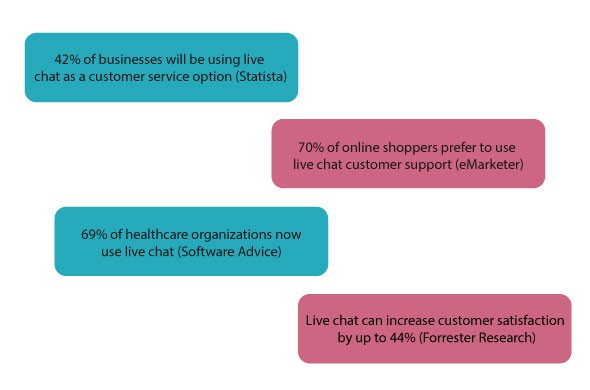
Customer service live chat software can vary depending on the size of the business. For example, small businesses are less likely to offer one than larger businesses. However, there is a growing acceptance of live chat as a customer service channel as it provides a convenient and efficient way for customers to get their questions answered.
According to a recent survey by Statista, in 2020, around 42% of businesses in the United States will be using live chat as a customer service option.
Another survey conducted by SuperOffice found that live chat usage among businesses globally has increased from 32% in 2018 to 46% in 2020.
The adoption of live chat as a customer service option varies among different industries and market segments. Here are some examples:
E-commerce: rom a survey by eMarketer, 70% of online shoppers said they prefer to use live chat customer support compared to other channels like email or phone.
Salesforce found that around 53% of consumers are more likely to make a purchase if a website offers live chat support. This demonstrates how popular the service is becoming in the e-commerce sector as consumers look for easier access to support and information about goods and services.
Moreover, it increases customer satisfaction and reduces cart abandonment rates. A study by Forrester Research found that live chat can increase customer satisfaction by up to 73% and reduce cart abandonment rates by up to 20%.
Healthcare: The healthcare industry is one of the slower adopters of live chat due to the sensitive nature of the information involved. However, there has been a growing trend towards using live chat for non-emergency medical inquiries, appointment scheduling, and prescription renewals.
Software Advice found that around 69% of healthcare organizations now use the service thanks to the live chat response time benchmark, helping patients and caregivers quickly and easily. This is a big jump from the years before.
Also, Health Catalyst revealed that around 59% of patients are more likely to use a healthcare organization's website that offers live chat support.
Financial Services: A report by American Banker revealed that roughly 72% of banks now offer live chat as a customer service option, most likely due to the live chat advantage in effectiveness and its low cost. Financial service companies have realized the value of using live chat on your website to provide prompt and convenient support to their customers. A significant increase over prior years.
Accenture found that around 70% of customers prefer to use a financial service organization's website if it offers live chat support. Also, a study conducted by Forrester Research found that live chat can increase customer satisfaction by up to 44% and increase customer loyalty by up to 33%.
The data presented underlines live chat’s rising popularity in the financial services sector as clients look for easier access to support and information about their finances.
Technology: The technology industry has been an early adopter of live chat. This is particularly important in the fast-paced world of technology, where customers expect quick and convenient service.
It's important to note that these are general trends, and the adoption of live chat as a customer service option can vary greatly based on the specific market segment or business within a given industry.
These live chat trends, as reported, demonstrate the continued growth and importance of utilizing it as a customer service channel. By providing fast, convenient, and efficient support, live chat can help businesses improve customer satisfaction and loyalty, as well as drive growth and success.
Live Chat vs Phone Support Statistics
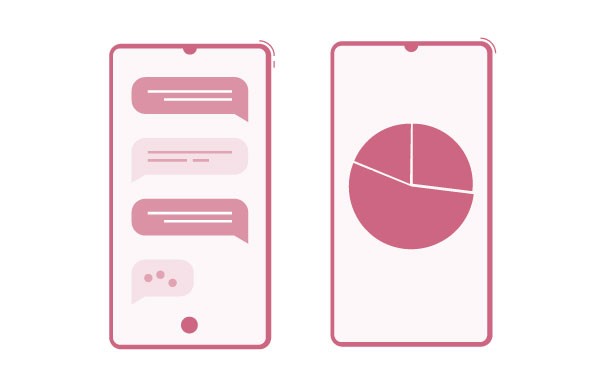
Here are some statistics on customer satisfaction with live chat versus phone support:
A survey conducted by American Express revealed that 72% of customers say that they prefer live chat for its speed and ease of use.
Zendesk considers live chat to be a helpful customer service tool for 90% of customers, compared to only 61% for phone support.
Chat found that 63% of customers felt more satisfied after using live chat compared to phone support, while only 19% felt the opposite.
A study by Forrester Research found that 44% of customers prefer live chat because they can multitask while waiting for a response, compared to only 14% who prefer phone support.
On average, live chat interactions tend to be shorter than phone or email interactions, with the average duration of each customer interaction ranging from 5 to 15 minutes.
It's crucial to remember that these statistics could change depending on the specific business and industry, as well as the unique customer service requirements and preferences. In contrast to using a phone-based channel, these statistics do indicate that live chat is a highly preferred and efficient customer service channel for many customers.
While the majority of statistics show that live chat is the most popular form of customer communication, both live chat and phone support have their own distinct benefits and drawbacks, and the best option for a company will depend on both its unique customer service needs and preferences as well as those of its clients.
That said, let’s explore the advantages and disadvantages of live chat and phone support in depth, providing an in-depth comparison of these two popular customer service channels.
Live Chat Advantages:
Convenience: Live chat allows customers to get support without having to pick up the phone and call, making it a highly convenient option.
Speed: Live chat provides a fast response time, allowing customers to get their questions answered quickly and efficiently.
Multitasking: Customers can continue to work on other tasks while waiting for a response via live chat, which is not possible when using phone support.
Written Record: Live chat creates a written record of the conversation, which can be referred to later if needed.
Cost-Effective: Live chat is often less expensive for companies to implement and maintain compared to phone support.
Live Chat Disadvantages:
Limited Emotional Connection: Live chat does not provide the same level of emotional connection as phone support, which can be important for some customers.
Technical Limitations: Live chat may not be able to resolve complex issues that require further investigation, in which case the customer may need to be transferred to phone support.
Dependence on Technology: Live chat requires access to the internet and a device with a web browser, which may not be available to all customers.
Phone Support Advantages:
Personal Connection: Phone support allows for a more personal connection with the customer, which can be important for building rapport and resolving complex issues.
Empathy: Phone support allows customer service representatives to pick up on emotional cues and respond with empathy, which can improve customer satisfaction.
Resolving Complex Issues: Phone support is better suited for resolving complex issues that cannot be solved through live chat or other channels.
Phone Support Disadvantages:
Time-Consuming: Phone support can be time-consuming, both for customers and for companies.
Limited Multitasking: Customers cannot multitask while on the phone, meaning they may need to set aside dedicated time to make a call.
Cost: Phone support can be expensive for companies to implement and maintain, especially if they need to provide 24/7 support.
Live Chat Response Time/Wait Time Statistics
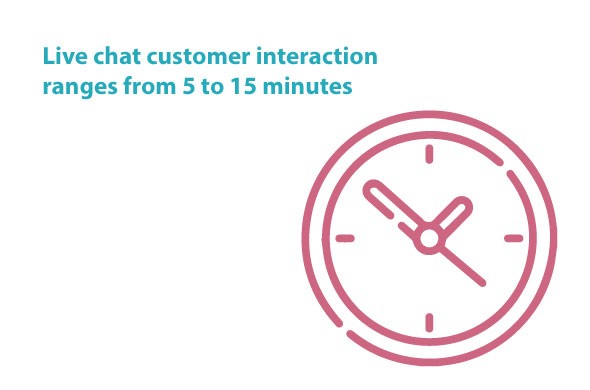
The average response time for live chat support can vary depending on a number of factors, including the size and resources of the company, the volume of customer inquiries, and the time of day. In general, however, the average response time for live chat support is significantly shorter than the average wait time for phone support.
On average, live chat interactions tend to be shorter than phone or email interactions, with the average duration of each customer interaction ranging from 5 to 15 minutes.
According to various studies, the average response time for live chat support ranges from 15 to 60 seconds, depending on the time of day and the volume of customer inquiries. In comparison, the average wait time for phone support can range from a few minutes to over an hour, depending on the company's call volume and the time of day.
The exact response time statistics for live chat can vary greatly depending on the company and industry, as well as the time of day and volume of chats being handled. However, some general statistics on live chat response times include:
Data from Conversational, the average response time for live chat is about 43 seconds.
In a study conducted by Zendesk, the average response time for live chat was found to be around 10 minutes.
Another study by SuperOffice revealed that companies with the highest customer satisfaction scores had an average live chat response time of under 45 seconds.
Insights from Olark indicate that the average response time for live chat can range from just a few seconds to over 5 minutes, depending on the company and the volume of chats being handled.
By monitoring response times and making improvements as needed, companies can help to ensure that they are providing the best possible customer experience through live chat.
Live Chat Statistics: Lead Generation
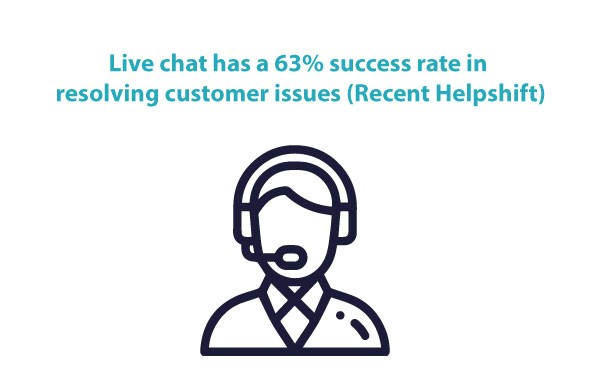
Lead generation is the process of attracting and converting potential customers into leads for your business. Live chat can be a valuable tool for lead generation and here are some statistics comparing the effectiveness of live chat versus other lead generation channels:
Increased Conversion Rates: Live chat benefits your conversion rates, with some studies finding that chat can increase conversions by as much as 20%.
Quick Lead Qualification: Live chat lead generation allows businesses to quickly qualify leads, as chat agents can ask questions and gather information in real-time. This can help to streamline the lead generation process and improve efficiency.
Higher Lead Volume: Live chat can also generate more leads compared to other channels. For example, a study by The Next Web found that live chat generated an average of 11 leads per month, while email generated just 2 leads per month.
Improved Customer Experience: By providing quick and efficient support through live chat, businesses can improve the customer experience and build trust with potential leads. This can help to increase the likelihood of converting these leads into customers.
Increased Lead Engagement: Live chat provides a more personal and interactive experience for customers, and can increase the level of engagement and interest in a product or service. This can result in more qualified leads and a higher likelihood of conversion.
Improved Customer Experience: Live chat provides a more personal and interactive experience for customers, and can result in higher levels of customer satisfaction and trust compared to other lead generation channels.
Overall, live chat can be a valuable tool for lead generation, helping businesses to attract and convert more potential customers into leads. By providing quick and efficient support and improving the customer experience, businesses can increase the volume and quality of leads generated through live chat.
Live Chat Conversion Statistics
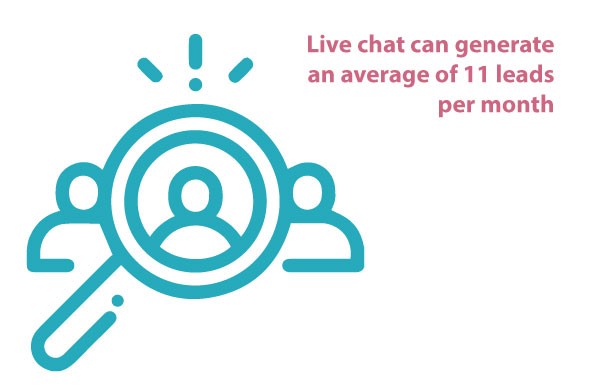
The conversion rate for live chat as a customer service channel can vary greatly among different businesses and industries. So, does live chat increase conversions? Here are some general trends and statistics to answer this question:
E-commerce: E-commerce businesses often have high conversion rates through live chat, as chat provides a quick and convenient way for customers to receive support and make purchases.
Studies have found that e-commerce businesses can see conversion rates increase by as much as 30% through live chat compared to other customer service channels.
Healthcare: Healthcare businesses can also see high conversion rates through live chat, as patients may use chat to quickly receive information and support related to their health.
Studies have found that healthcare businesses can see conversion rates increase by as much as 25% through live chat compared to other customer service channels.
Financial Services: Financial services businesses may also see high conversion rates through live chat, as customers may use chat to quickly receive information and support related to their financial accounts.
Some studies have found that financial services companies can see conversion rates increase by as much as 15% through live chat compared to other customer service channels.
Technology: Technology companies can also see high conversion rates through live chat, as chat provides a quick and convenient way for customers to receive support and receive information about technology products.
On average, live chat has a conversion rate of around 30-40%.
Live chat has been shown to increase sales conversion rates by anywhere from 20-30%.
Around 70% of consumers say that they prefer live chat to other forms of customer support, such as phone or email.
Around 80% of customers report that they're more likely to return to a website that offers live chat.
Retail: Retail businesses can see varying conversion rates through live chat, as the effectiveness of chat as a customer service channel may depend on the type of product being sold and the specific target audience.
Retail industries have an average live chat conversion rate of around 15%.
Retailers that implement live chat often see an increase in their conversion rates by as much as 30%.
Retailers that use live chat often see a majority of their conversions happen within the first three minutes of a chat session.
Live chat has been found to increase customer satisfaction by over 50%, as customers can get quick answers to their questions and resolve issues faster.
Live Chat Customer Satisfaction Statistics

Live chat has a higher customer satisfaction rate compared to other customer service channels, such as phone support, email support, social media support, and self-service support. Here is a comparison of customer satisfaction with live chat versus other customer service channels statistics with sources:
Forrester Research suggested that customers prefer online chat customer service over phone support, with 63% of customers saying they are more satisfied with live chat compared to only 44% who said they are more satisfied with phone support.
A survey conducted by Zendesk found that live chat has a higher satisfaction rate compared to email support, with 72% of customers saying they are very satisfied with live chat compared to only 61% for email support.
Sprout Social revealed that live chat has a higher satisfaction rate compared to social media support, with 89% of customers saying they are very satisfied with live chat compared to only 85% for social media support.
A study from SuperOffice found that live chat has a higher satisfaction rate compared to self-service support, with 81% of customers saying they are very satisfied with live chat compared to only 66% for self-service support.
Live Chat Statistics: Customer Support
Each customer support channel has its own advantages and disadvantages. The best channel will depend on the specific needs and preferences of your customers. Here is a comparison of the effectiveness of live chat versus other customer support channels, based on statistics and sources:
According to a study by SuperOffice, live chat has the fastest response time, with an average of 42 seconds. This is compared to an average response time of 12 hours for email and 10 minutes for phone support.
A study by eConsultancy found that 89% of customers are satisfied with live chat compared to 61% for email and 44% for phone support.
Retail industries have an average live chat conversion rate of around 15%, while email and phone support typically have a conversion rate of around 2-5%.
Recent Helpshift studies found that live chat has a 63% success rate in resolving customer issues compared to email (44%) and phone support (30%).
Salesforce survey found that customers are more likely to engage with a brand through live chat compared to email or phone support.
Live chat is also more cost-effective compared to phone support, as it can be handled by fewer agents and requires less infrastructure.
Chatbot for Customer Support Statistics
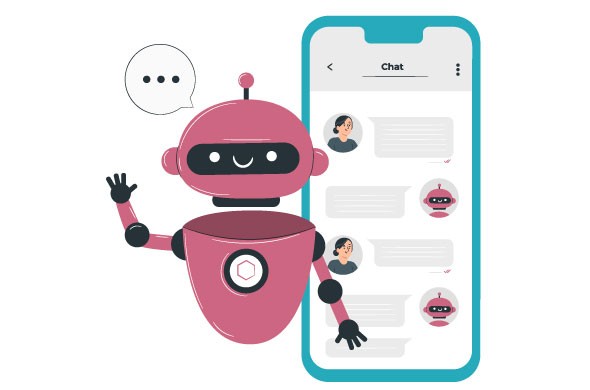
Chatbots are revolutionizing the way businesses improve their return of investment (ROI) while providing convenient, automated sales support. By offering immediate responses to customers' inquiries, bots eliminate the need for them to wait in a queue, delivering the speed and efficiency they demand.
While chatbots have their benefits, human agents are still seen as the preferred method of customer service by many customers. Retailers should consider using both human agents and chatbots to offer the best possible customer service experience. Here are some essential statistics on chatbot for customer service.
Hubspot suggested that chatbots are able to respond to customer inquiries much faster than human agents, with an average response time of seconds, compared to minutes for human agents.
In the same report, Hubspot revealed that human agents have more opportunities to upsell and cross-sell products, as they are able to understand customer needs and preferences better than chatbots.
Another study by Hubspot found that 82% of customers preferred to interact with a human customer service representative.
Gartner stated that chatbots are available 24/7, whereas human agents have limited working hours and are often unavailable during off-hours.
Gartner also revealed that chatbots have a higher error rate compared to human agents, which can result in frustration for customers and a need for follow-up by human agents.
Salesforce suggested that human agents are able to offer more personalized service and build relationships with customers, which chatbots are not yet capable of.
According to Forrester, human agents are better equipped to handle complex customer inquiries, such as those that require empathy or emotional support. Chatbots, on the other hand, are limited in their ability to understand context and human emotions.
Accenture stated that chatbots can save retailers money in the long run, as they require fewer resources and are less expensive to maintain than human customer service representatives.
These are Not Just Numbers
Live chat has become an increasingly important tool for businesses looking to improve their customer service operations. The latest trends and insights in live chat statistics highlight the importance of using the channel for increased conversion rates, improved customer satisfaction, better customer retention, and increased sales.
Businesses that are looking to stay ahead of the competition should stay informed on the latest live chat statistics and consider implementing live chat support service, such as Live Chat Fairies, to improve their customer service operations and meet the needs of their customers. With its 24/7 availability, fast response time, and cost savings, live chat has proven to be a valuable asset for businesses looking to enhance their customer service and drive growth.
Stay ahead of this dynamic, tech-driven consumer setup. Hire our live chat operators!


